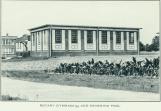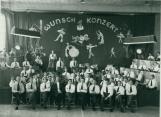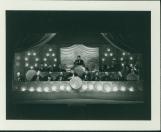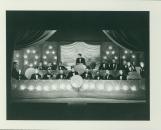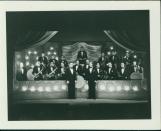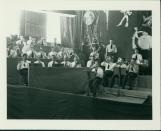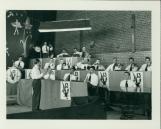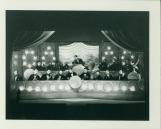1
Camp 30 was probably very crowded at times, with a peak population of 800 prisoners of war. But from various viewpoints it was probably a quite comfortable way of wartime life. The officers were paid and could receive promotion in rank while serving as captives. Goods could be purchased from mail order catalogues. The Universtiy of Toronto, along with Y.M.C.A. coordination, provided lectures; a symphony orchestra was formed; Schiller's plays among others were staged in the auditorium; and escorted walks outside the gates were permitted. A camp newspaper, sports, film shows, games, hobbies, vegetable plots and the farm operation provided a meaningful existence for the POWs.Taken from "Bowmanville /Another Farewell to Arms" by W. Anthony Norton 1981
2
The POWs effectively ran the camp themselves. Every POW was assigned a task from kitchen to laundry to gardening and so on. The primary role of the Canadian guards was to keep the camp secure not serve the POWs. The POWs produced their own food. They were given an abandoned farm one kilometer north of Camp 30. They were allowed to walk on parole to the farm in order to care for the animals and work the gardens. Since the farm had not been used for two years, the General in charge of getting it back into shape said it took four weeks of long labour hours to clean the barns and stables, prune the overgrownorchards and till the gardens in order to get everything in shape again. General Major Friemel sent a letter to his International Red Cross representatice, Mr. Maag, asking for assistance in establishing the farm into an educational farm for German officers interested in agriculture. In the letter he notes their hope to establish a 2 acre vegetable garden and to raise cattle, pigs, horses and poultry.3
Modern Day photo of the Greenhouses tended to by the POWs at Camp 30Circa 2005
Bowmanville, Ontario, Canada

6
POWs playing a game of hockeyCirca 1941
Bowmanville, Ontario, Canada
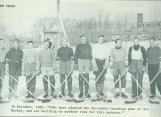 Credits:
Credits:National Archvies of Canada
